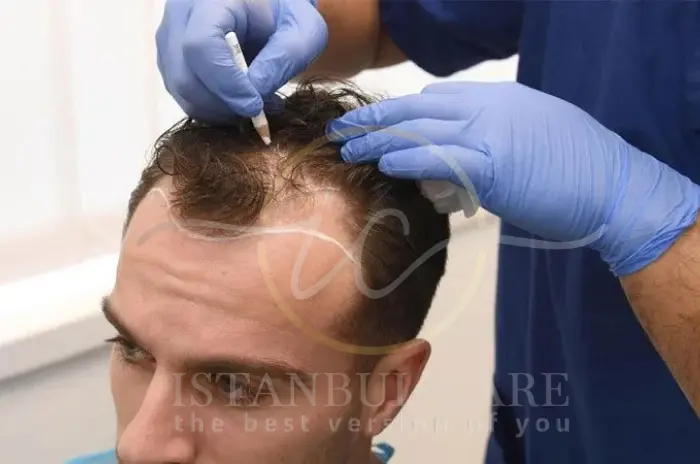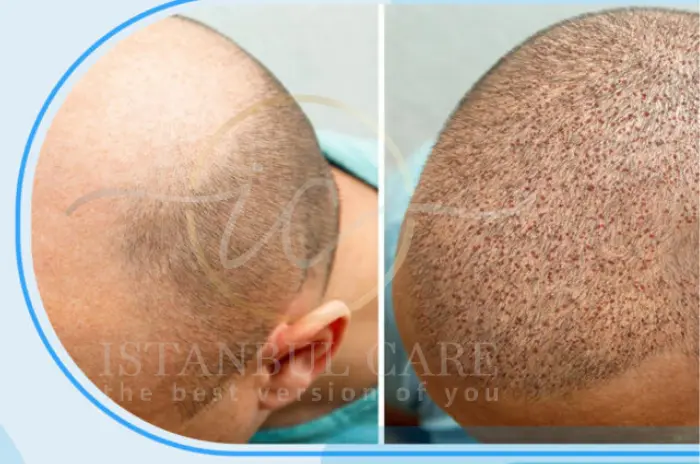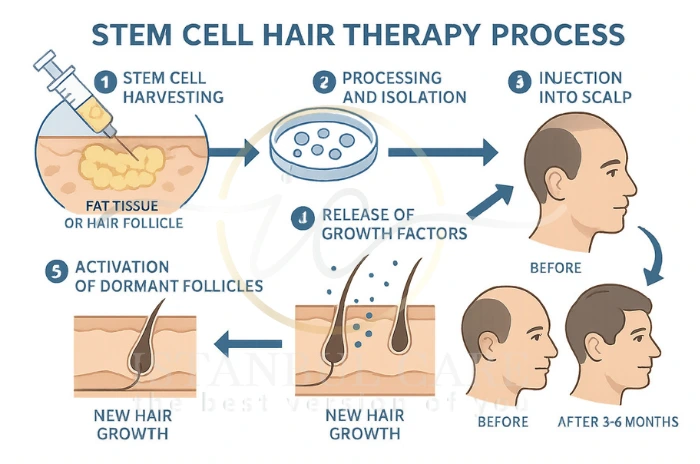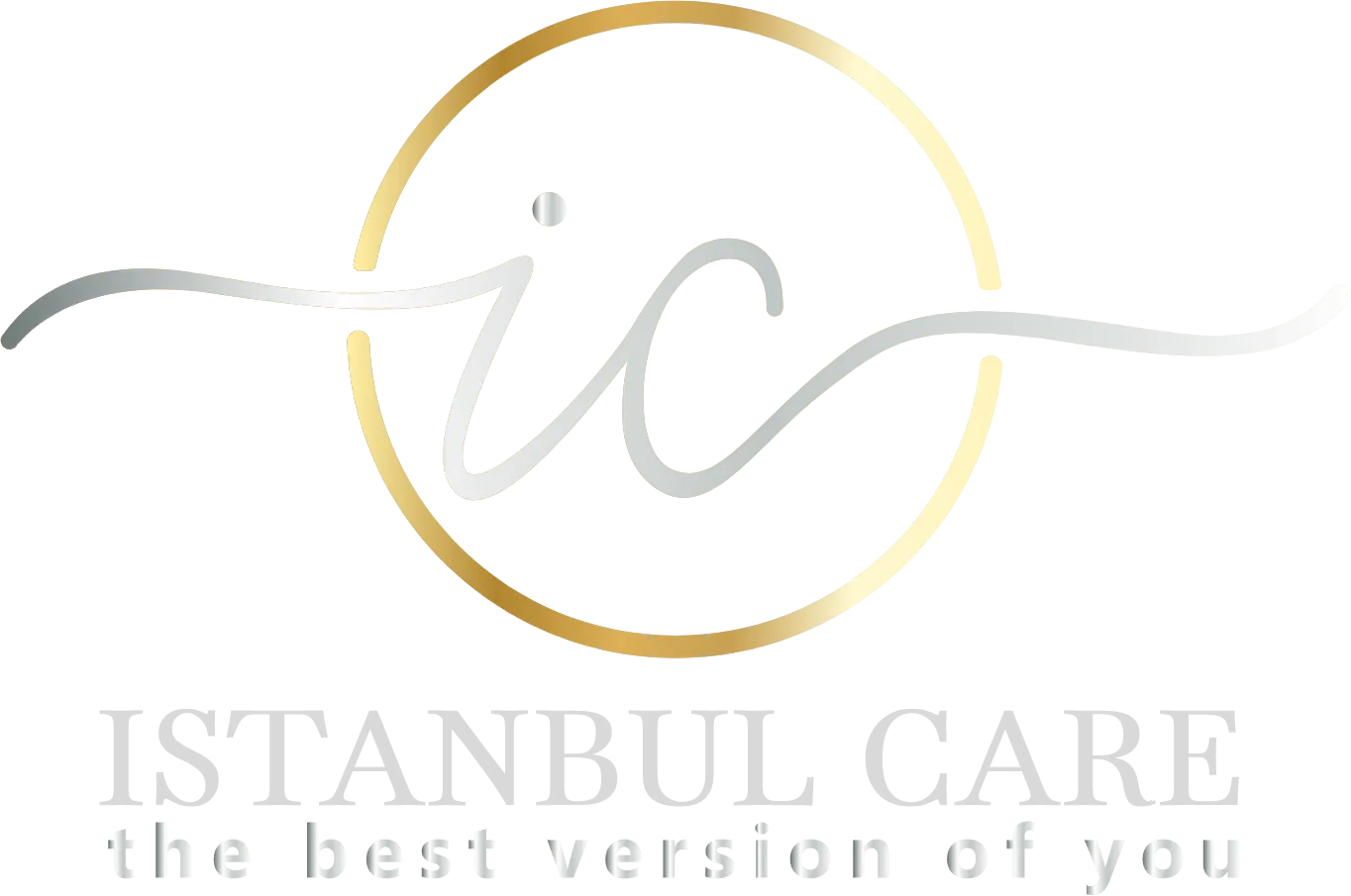Hair loss affects millions of people worldwide, driving continuous innovation in hair restoration treatments. Among the most promising developments are stem cell technologies that offer new hope for those experiencing hair loss. Understanding the differences between stem cell hair transplants and stem cell hair treatments is crucial for making informed decisions about your hair restoration journey.
Stem cell therapy for hair loss represents a revolutionary approach that harnesses the body’s natural regenerative capabilities. Unlike traditional hair transplant methods, these innovative techniques focus on stimulating natural hair follicle regeneration rather than simply relocating existing hair follicles. This comprehensive guide explores the key differences between surgical and non-surgical hair restoration stem cells options, helping you understand which approach might be best for your specific needs.
Rich in vitamin E, omega-6 fatty acids, and linoleic acid, this lightweight hair oil has become increasingly popular among those with fine hair who previously struggled to find oils that wouldn’t weigh down their strands. The anti-inflammatory properties of grapeseed oil make it particularly beneficial for scalp health, while its molecular structure allows for easy absorption, making it an ideal choice for daily use.

What are stem cell hair treatments?
Stem cell hair treatments represent a non-surgical hair restoration approach that utilizes the regenerative properties of stem cells to stimulate natural hair growth. These treatments focus on injecting concentrated stem cells directly into the scalp to revive dormant hair follicles and promote new hair development.
Injecting stem cells into the scalp
The process involves extracting stem cells from the patient’s own body, typically from fat tissue or bone marrow, then processing and concentrating these cells before injection. Scalp injection stem cells are administered using fine needles in a minimally invasive procedure that targets areas of hair loss. The treatment stimulates blood flow and provides growth factors that encourage hair follicle regeneration.
This regenerative hair therapy approach requires multiple sessions spaced several weeks apart for optimal results. Patients typically experience minimal discomfort during the procedure, which can be completed in a clinical setting within a few hours.
Adipose-derived and bone-marrow stem cells
Adipose-derived stem cell therapy utilizes stem cells harvested from the patient’s fat tissue, usually from the abdomen or thighs. These cells are particularly effective because they contain high concentrations of growth factors and can be easily extracted through a minor liposuction procedure.
Bone marrow-derived stem cells offer another source for stem cell therapy hair loss treatments. While these cells have shown promise in research studies, the extraction process is more invasive and typically requires specialized medical facilities.
Research on treatment results
Current research on stem cell hair treatments shows promising but varied results. Studies indicate that patients may experience improved hair density and thickness within 3-6 months of treatment. However, the effectiveness varies significantly based on the extent of hair loss, the quality of stem cells used, and individual patient factors.
Long-term studies are still ongoing to establish the durability of results and optimal treatment protocols for regenerative hair therapy.
What are stem cell hair transplants?
Stem cell hair transplants combine traditional surgical techniques with cutting-edge stem cell technology to enhance hair restoration outcomes. This approach goes beyond simple follicle relocation by incorporating regenerative elements that may improve graft survival and promote additional hair growth.
Lab-grown follicles from stem cells
Scientists are developing techniques to grow new hair follicles in laboratory settings using stem cells. This revolutionary approach could potentially create unlimited donor hair for transplantation, addressing the primary limitation of traditional hair transplant procedures.
While still largely experimental, lab-grown follicles represent the future of surgical stem cell hair transplant technology. Research facilities worldwide are working to perfect these techniques for clinical application.
Combining ADSC with FUE transplant
Follicular unit extraction (FUE) procedures can be enhanced by incorporating adipose-derived stem cell therapy. This combination involves extracting stem cells from the patient’s fat tissue and injecting them into both donor and recipient areas during the transplant procedure.
The stem cells help improve graft survival rates and may stimulate surrounding dormant follicles to begin producing hair. This approach maximizes the benefits of both surgical precision and regenerative medicine.
Fat-graft stem cell transplant technique
Some clinics offer fat-graft stem cell transplant procedures that combine fat grafting with hair transplant surgery. This technique involves transferring processed fat tissue containing stem cells to the scalp along with traditional hair grafts.
The fat provides a rich source of stem cells and growth factors that support healing and may enhance overall hair restoration results.
Key differences between transplants and treatments
Understanding the fundamental differences between stem cell hair transplants and treatments is essential for choosing the right approach for your hair loss situation.
| Aspect | Stem Cell Hair Treatments | Stem Cell Hair Transplants |
|---|---|---|
| Approach | Non-surgical hair restoration with scalp injections | Surgical stem cell hair transplant with follicle placement |
| Procedure Time | 2-4 hours | 4-8 hours |
| Recovery Time | 24-48 hours | 7-10 days |
| Anesthesia | Local/topical | Local anesthesia |
| Best For | Mild to moderate hair loss | Severe hair loss and bald areas |
| Results Timeline | 3-6 months | 6-12 months |
| Sessions Required | Multiple (3-6 sessions) | Usually single procedure |
| Cost Range | $1,500-$5,000 per session | $8,000-$20,000 |
| Scarring | None | Minimal with FUE technique |
| Effectiveness | 60-80% improvement | 85-95% graft survival |
Surgical vs non-surgical approach
Stem cell hair treatments are entirely non-surgical hair restoration procedures that involve only injections into the scalp. These treatments require no incisions, stitches, or extended recovery periods, making them appealing to patients seeking minimal downtime.
Surgical stem cell hair transplant procedures involve traditional transplant techniques enhanced with stem cell technology. These require surgical intervention, creating small incisions in both donor and recipient areas.
Who needs transplants vs treatments
Stem cell hair treatments work best for patients with mild to moderate hair loss who still have functioning hair follicles that can be stimulated. These treatments are ideal for early-stage hair thinning and as preventive measures.
Stem cell hair transplants are better suited for patients with significant hair loss areas where follicles are completely absent. These procedures can restore hair in completely bald areas where treatments alone would be insufficient.

What Is a Stem Cell Hair Transplant?
A stem cell hair transplant is a surgical procedure that combines traditional hair transplantation techniques with stem cell therapy. The process involves harvesting hair grafts and simultaneously extracting and processing stem cells for injection into the treatment area.
This comprehensive approach addresses both immediate hair replacement needs and long-term hair follicle regeneration, potentially providing superior results compared to traditional methods alone.
How Does Stem Cell Hair Treatment Work?
Stem cell hair treatment works by introducing concentrated growth factors and regenerative cells directly to areas of hair loss. The stem cells release proteins and growth factors that stimulate blood vessel formation, reduce inflammation, and encourage dormant hair follicles to enter active growth phases.
The treatment process typically involves multiple sessions to achieve optimal results, with effects becoming visible gradually over several months.
Downtime and recovery needs
Non-surgical hair restoration stem cells treatments require minimal recovery time. Patients can typically return to normal activities within 24-48 hours, with only minor scalp tenderness or swelling.
Surgical stem cell hair transplant procedures require more extensive recovery, similar to traditional transplants. Patients need 7-10 days off work and must follow specific post-operative care instructions to ensure optimal healing.
Possible side effects of stem cell transplants
While stem cell hair transplants are generally safe, patients should be aware of potential complications and side effects associated with these procedures.
Pain, swelling, and itching
Most patients experience mild to moderate pain following surgical stem cell hair transplant procedures. This discomfort typically resolves within a few days with appropriate pain management medication.
Swelling around the forehead and eyes is common and usually peaks 2-3 days after surgery before gradually subsiding. Itching in the treatment area is normal as healing progresses but should not be scratched to avoid complications.
Infection, bleeding, and scarring
As with any surgical procedure, stem cell hair transplants carry risks of infection, bleeding, and scarring. Proper post-operative care and following medical instructions significantly reduce these risks.
Bleeding is typically minimal and stops within hours of the procedure. Stem cell hair transplant side effects related to scarring are generally less severe than traditional methods due to improved healing from stem cell enhancement.
Alternative hair restoration options
Several established hair restoration alternatives exist for patients who may not be ideal candidates for stem cell procedures or prefer proven treatment methods.
Traditional FUE and FUT transplants
Follicular unit extraction (FUE) remains the gold standard for surgical hair restoration. This technique involves individually extracting hair follicles from donor areas and transplanting them to balding regions.
FUT (Follicular Unit Transplantation) involves removing a strip of scalp from the donor area and dissecting it into individual grafts. While this method may leave a linear scar, it can be more cost-effective for large transplant sessions.
PRP therapy and low-level laser therapy (LLLT)
PRP therapy for hair uses concentrated platelets from the patient’s blood to stimulate hair follicle activity. This non-surgical hair restoration option is less expensive than stem cell treatments and has shown effectiveness in clinical studies.
Low-level laser therapy provides another non-invasive option that uses specific wavelengths of light to stimulate hair follicles and improve scalp health.
Benefits of Stem Cell Therapy for Hair Loss
Stem cell therapy for hair loss offers unique advantages that distinguish it from traditional hair restoration methods, making it an attractive option for many patients.
Long-Term Hair Restoration with Stem Cell Transplants
Stem cell hair transplants may provide longer-lasting results compared to traditional methods due to their regenerative properties. The stem cells continue working after the initial procedure, potentially stimulating new hair growth and improving the health of surrounding hair follicles.
This approach addresses not just immediate hair replacement needs but also the underlying causes of hair loss, potentially slowing future progression.
Non-Surgical Stem Cell Hair Treatments: Pros and Cons
Non-surgical stem cell hair treatments offer the advantage of minimal downtime and reduced risk compared to surgical procedures. These treatments can be repeated as needed and work well in combination with other hair loss treatments.
However, results may be less dramatic than surgical options, and multiple sessions are typically required to achieve desired outcomes. The effectiveness varies significantly between individuals.
How Effective Are Stem Cell Hair Treatments?
The effectiveness of stem cell hair treatments continues to be studied, with research showing promising but variable results across different patient populations and treatment protocols.
Success Rates of Stem Cell Hair Transplants
Stem cell hair transplants show success rates comparable to or better than traditional transplant methods. Studies indicate that incorporating stem cells may improve graft survival rates by 10-15% compared to standard procedures.
Patient satisfaction rates are generally high, with most reporting noticeable improvements in hair density and quality within 6-12 months of treatment.
Comparing Stem Cell Therapy to PRP for Hair Loss
When comparing stem cell therapy hair loss treatments to PRP therapy for hair, both show effectiveness for mild to moderate hair loss. Stem cell treatments may provide more potent growth factors and longer-lasting results, but PRP therapy is more widely available and cost-effective.
The choice between these regenerative hair therapy options often depends on individual patient factors, budget considerations, and treatment goals.
Choosing the Right Hair Loss Treatment for You
Selecting the appropriate hair loss treatment requires careful consideration of multiple factors, including the extent of hair loss, budget, lifestyle, and personal preferences.
Who Is a Good Candidate for Stem Cell Hair Transplants?
Ideal candidates for stem cell hair transplants include patients with moderate to severe hair loss who have sufficient donor hair and are in good overall health. These procedures work best for individuals with realistic expectations about outcomes and recovery requirements.
Patients with autoimmune conditions affecting hair growth or those taking certain medications may not be suitable candidates for surgical stem cell hair transplant procedures.
Alternative Hair Loss Treatments: FUE and PRP
For patients not ready for surgical intervention, FUE procedures offer proven results with established success rates. PRP therapy provides a minimally invasive option that can be combined with other treatments for enhanced results.
These alternative hair restoration options may be more appropriate for younger patients or those with early-stage hair loss.

Stem Cell Hair Therapy: Costs and Recovery
Understanding the financial investment and recovery expectations is crucial when considering stem cell hair therapy options.
What to Expect After a Stem Cell Hair Transplant
Recovery from stem cell hair transplants follows a predictable timeline. Initial healing occurs within 7-10 days, with transplanted hair typically shedding within 2-4 weeks before new growth begins.
Patients can expect to see initial results within 3-4 months, with full results visible after 12-18 months. The stem cell hair transplant cost varies based on the extent of treatment and clinic location.
Are Stem Cell Hair Treatments Worth the Investment?
The value of stem cell hair treatments depends on individual circumstances and treatment goals. While more expensive than some alternatives, these treatments may provide superior long-term results and reduced need for future interventions.
Patients should consider the total cost of ownership, including potential touch-up treatments and maintenance requirements when evaluating stem cell hair transplant cost.
Who should consider stem cell hair options?
Determining candidacy for stem cell hair options requires careful evaluation of hair loss patterns, medical history, and treatment expectations.
Mild to moderate hair loss: treatments
Patients with mild to moderate hair loss who still have functioning hair follicles are excellent candidates for non-surgical stem cell hair treatments. These individuals can benefit from the regenerative properties without requiring surgical intervention.
Regenera Activa stem cells and similar treatments work best when started early in the hair loss process, before follicles become completely inactive.
Severe hair loss: transplants
Individuals with severe hair loss or completely bald areas require surgical stem cell hair transplant procedures to achieve meaningful results. These patients need actual hair follicle transplantation combined with stem cell enhancement for optimal outcomes.
Autologous stem cell hair transplant procedures using the patient’s own cells provide the safest and most effective approach for severe cases.
Traditional hair transplant methods
Understanding established hair transplant techniques helps patients appreciate how stem cell enhancements improve upon these proven methods.
What is FUT hair transplant?
FUT (Follicular Unit Transplantation) involves removing a strip of scalp from the donor area and carefully dissecting it into individual follicular units for transplantation. This traditional hair transplant method can move large numbers of grafts in a single session.
While effective, FUT leaves a linear scar and requires more invasive surgery compared to newer techniques like FUE.
What is FUE hair transplant?
Follicular unit extraction (FUE) individually extracts hair follicles from donor areas using specialized punches, leaving minimal scarring. This technique offers the advantage of hair transplant without scars and faster recovery compared to FUT.
FUE procedures can be enhanced with stem cell therapy to improve graft survival and stimulate additional hair growth in surrounding areas.
Risks and limitations of stem cell transplants
While stem cell hair transplants offer promising results, patients should understand potential risks and current limitations of these emerging technologies.
Mild pain, swelling, bruising
Most stem cell hair transplant side effects are mild and temporary. Pain is typically manageable with over-the-counter medications, while swelling and bruising resolve within a week of treatment.
These side effects are generally less severe than those associated with traditional transplant methods due to the enhanced healing properties of stem cells.
Temporary shedding and low complication risk
Temporary shedding of transplanted hair occurs in most patients within 2-4 weeks of surgery. This is normal and expected, with new growth beginning 3-4 months post-procedure.
Serious complications are rare with stem cell hair transplants, particularly when performed by experienced surgeons using proper techniques and sterile conditions.
Limited long-term data and regulatory issues
Long-term data on stem cell hair transplants remains limited due to the relatively recent introduction of these techniques. Most studies follow patients for 1-2 years, with longer-term outcomes still being evaluated.
Regulatory oversight of stem cell therapy for hair loss varies by country, and patients should ensure their chosen clinic follows appropriate guidelines and safety protocols.
Treatment Process and Patient Experience
Understanding what to expect during stem cell hair therapy helps patients prepare mentally and physically for their chosen treatment.
What to Expect During Restoration Therapy
Non-surgical hair restoration stem cells treatments typically begin with consultation and medical evaluation. The procedure involves extracting stem cells, processing them in a laboratory setting, and injecting the concentrated cells into targeted scalp areas.
Most patients describe the experience as minimally uncomfortable, similar to receiving multiple small injections. The entire process usually takes 2-4 hours depending on the treatment area size.
The Surgical Transplant Experience
Surgical stem cell hair transplant procedures combine traditional transplant techniques with stem cell enhancement. Patients receive local anesthesia for comfort during both graft harvesting and stem cell injection phases.
The experience is generally well-tolerated, with most patients able to rest, read, or watch entertainment during the procedure. Post-operative care instructions ensure optimal healing and results.
Speak with our expert Hair Transplantation specialists

Speak with our expert Hair Transplantation specialists
We’re ready to answer your questions
FAQs for Stem Cell Hair Transplants vs Treatments Key Differences Explained
Stem cell hair treatments use concentrated regenerative cells injected into the scalp to stimulate dormant hair follicles and promote natural hair growth through growth factors and improved blood circulation.
Stem cell hair transplants combine surgical follicle transplantation with stem cell therapy to enhance graft survival and stimulate surrounding follicles, while traditional hair transplants only relocate existing hair follicles.
Stem cell hair treatments suit patients with mild to moderate hair loss and functioning follicles, while stem cell hair transplants are better for severe hair loss with completely bald areas requiring follicle replacement.
Stem cell hair treatments are non-surgical with minimal downtime, while stem cell hair transplants require surgical intervention with 7-10 days recovery time and more extensive post-operative care.
Stem cell hair transplant side effects include mild pain, swelling, itching, temporary hair shedding, and rare risks of infection, bleeding, or scarring similar to traditional transplant procedures.
Studies show stem cell hair treatments and transplants can improve hair density and quality, with success rates comparable to or better than traditional methods, though long-term data remains limited.
Stem cell hair transplant cost is typically higher than traditional methods but may provide superior long-term results, while non-surgical treatments cost less but require multiple sessions for optimal outcomes.
Consider FUE, FUT, or PRP therapy for hair when stem cell options are unavailable, too expensive, or when proven traditional methods better suit individual hair loss patterns and treatment goals.

